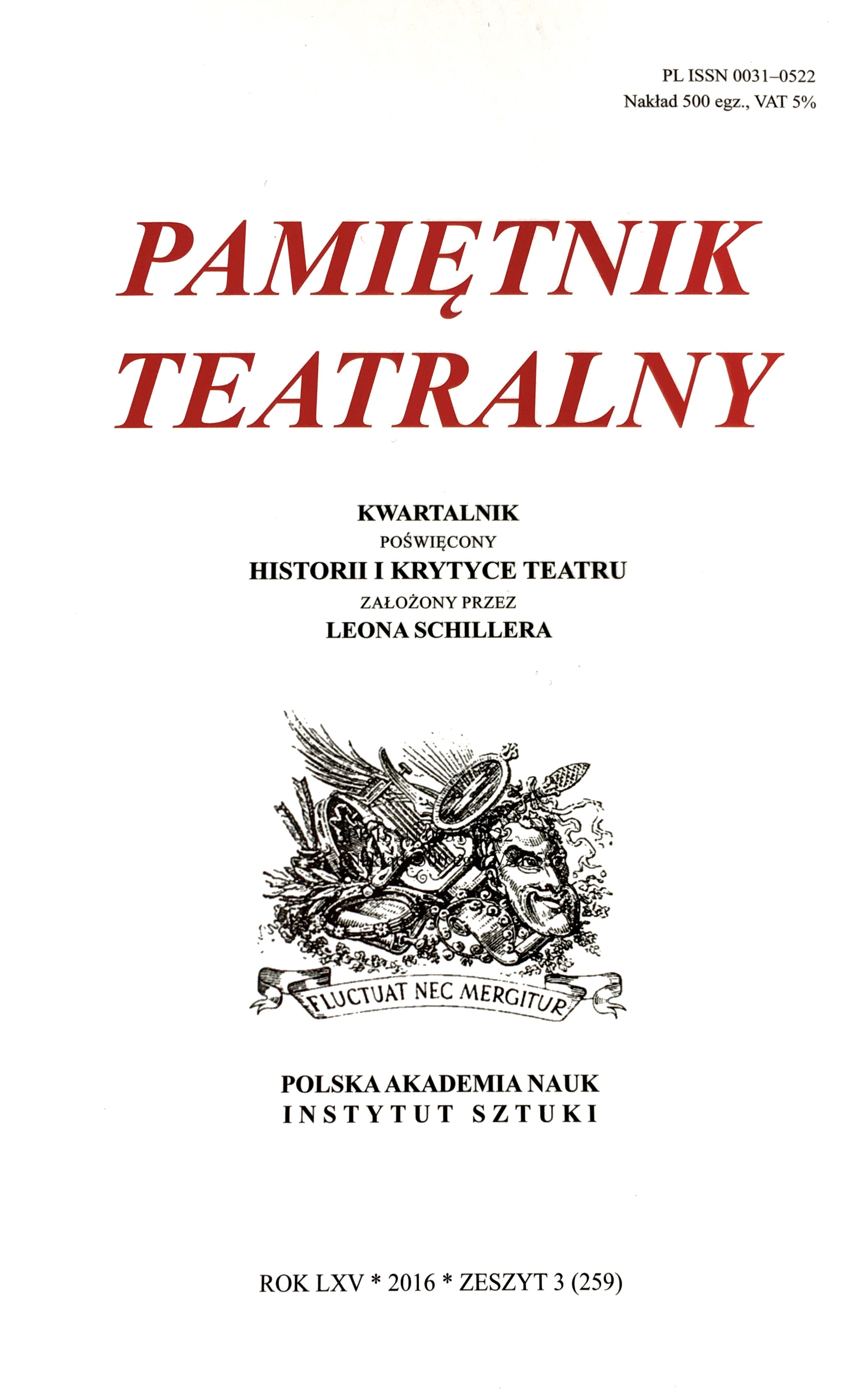Metateatralne elementy dramatów Witkacego
Metatheatrical Elements in Witkacy’s Dramas
Author(s): Przemysław PawlakSubject(s): Theatre, Dance, Performing Arts
Published by: Instytut Sztuki Polskiej Akademii Nauk
Keywords: Witkacy;metatheatre
Summary/Abstract: Following in the footsteps of Alf Sjöberg and Krystyna Ruta-Rutkowska, the author of the article finds metatheatrical elements in the plays by Stanisław Ignacy Witkiewicz and by doing so casts doubt on the assertion made by Jan Błoński that it is inherent for characters of the Pure Form plays to be aware of their role playing. The article examines auto-commentaries and musings of the characters in Oni (‘They’) and Matka (The Mother) on the existential status of themselves and the world they inhabit. It seems that the attempts to escape their non-Euclidean spacetimes by the characters of Kurka wodna (The Water Hen) and Mątwa (The Cuttlefish) are a metatheatrical device, whereas the co-existence of the living and the dead and of reality and dream are not. Introduction of off-stage personages, spoken stage directions, or the use of tables or banners bringing to mind medieval mansion banners as parts of stage setting can be considered metatheatrical elements. Witkacy uses the motifs of theatrum mundi and a play within a play on numerous occasions, and he bravely applies the old-fashioned partes minores in the construction of his plays. The following may serve as good examples: Maciej Korbowa i Bellatrix (Maciej Korbowa and Bellatrix), Nowe Wyzwolenie (The New Deliverance), Tumor Mózgowicz (Tumor Brainiowicz). The Second Apprentice in Szewcy (‘The Cobblers’) turns out to be an intertextual medium, and Bezimienne dzieło (The Anonymous Work) is a warning against bioengineering, being a central motif of Gyubal Wahazar as well. When Witkacy’s characters usurp the power of the author of the text whose part they are, the readers and audiences are faced with a serious hermeneutic dilemma.
Journal: Pamiętnik Teatralny
- Issue Year: 259/2016
- Issue No: 3
- Page Range: 169-178
- Page Count: 10
- Language: Polish

